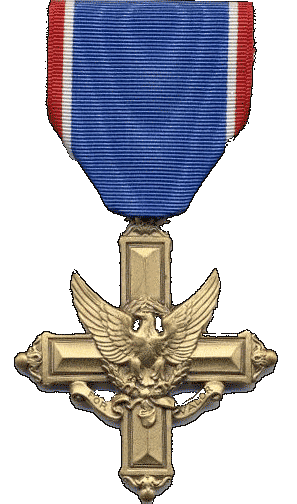Arthur E. Barks
The following is taken from Roger A. Freeman's "Mighty Eighth War Diary" (page 156-157) and describes the setting for the posthumous award of the US Army's second highest award for valor - the Distinguished Service Cross.
"One of the most unusual and possibly unique awards of the Distinguished Service Cross that was made posthumously to 2nd Lt Arthur E. Barks, killed on 22 December 1943. The 445th Bomb Group was on its fourth mission and 2nd Lt Glen Jorgensen's crew, in which Barks was navigator, were on their third flying a 'borrowed' Ford-built B-24H called Lizzie. As the formation levelled out at 22,000 ft over Germany, enroute to the target at Osnabrück, No.2 engine lost power. Even with the manifold pressure on the other engines increased to maximum, the heavily loaded bomber began to slip back from its position in the low element of the lead squadron. Jorgensen attempted to gain power from the ailing No.2 by manipulating the supercharger controls back and forth but by the time the target was reached Lizzie was training the formation and continued to do so in the withdrawal across Holland."
"The fear that stragglers attracted attention from enemy fighters was soon realized. The crew watched helplessly as another lagging Liberator was attacked and sent spinning into the undercast. then the fighters turned on Lizzie. By taking evasive action jorgensen managed to escape the first assaults from the rear. A flight of Me-110s appeared and in a climbing pass put cannon shells into the No.1 engine and holed a fuel tank - fortunately without igniting it. Another pass brought hits in the bomb-bay and waist, slightly wounding both gunners. One 20 mm shell, penetrating the nose, detonated against Barks' side where the flak jacket was open, literally blasting him from his position into bombardier 2nd Lt Roy Stahl. The explosion also drove fragments into Stahl's legs and ignited something in the nose compartment, filling it with smoke. Stahl picked himself up and groped for an extinguisher, but the smoke had begun to clear. Barks had somehow returned to his table, re-connected his interphone and was giving the pilot a heading when he collapsed. Stahl tried to administer aid to Barks, quickly realizing his wounds were mortal and there was little he could do to help his friend. The bombardier's oxygen lines had been disconnected when the navigator's body struck him and he then reconnected them to receive the much needed oxygen. Meanwhile, the top turret gunner T/Sgt Charles Jones had dispatched one of the antagonists and the other Messerschmitts withdrew, apparently low on fuel. Jorgensen and co-pilot Charlie Mathews were left to coax Lizzie 300 miles to England on the two functioning engines."
"Losing altitude rapidly the Liberator plunged through the undercast finally emerging when over the sea. Every item of equipment that could be spared was pushed oberboard to lighten the bomber in the hope of checking the descent taking it nearer and nearer to the waves. Stahl called up Jorgensen and asked if the body of the dead navigator should be dropped out. Jorgensen pondered the question and answered in the affirmative; it was the most agonising decision he had ever had to make. Barks was a well-built youngster, 170 pounds plus flight clothing, weight that might make the difference as to whether or not nine other men returned safely. For Stahl it was particularly heart-rending task to push the body of his friend and training classmate out the escape hatch with the help of the nose turret gunner. Altitude still diminished but now less rapidly and 25 minutes later the crew of Lizzie were relieved to cross the white cliffs of the Kent coast - although by less than a thousand feet. Very soon the runway at Manston came into view and the undercarriage was lowered for a straight-in approach. only the right main wheel extended and then would not retract. The pilots had little option rather than to continue the landing run, which Jorgensen did, balancing the bomber on the one main and the nose wheel for about three quarters of the length of the runway before loss of flying speed caused the left wing tip to dip and spin Lizzie around to a violent stop, but without harm to the crew."
"While there were no criteria for the bestowal of the DSC in such circumstances, and the citation for Arthur Barks makes no mention of the sacrifice of his dead body to better the chance of survival of his comrads, it was in this respect that the posthumous award of this high decoration was made. It was also the only DSC to go to a member of the 445th Group during hostilities."

